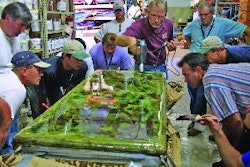For nearly a year, various industry associations have worked together under the auspices of the Construction Industry Employer Coalition to halt adoption of a new voluntary standard by the American National Standards Institute (ANSI). Entitled "Reduction of Musculoskeletal Problems in Construction" (ANSI/ASSE A10.40-2007), the standard aims to reduce musculoskeletal problems/disorders (MSDs) in the construction industry.
Since the standard and its recommendations are voluntary, you may wonder why all the fuss? Although the Construction Industry Employer Coalition argued against it based largely on procedural issues in how it was adopted, there are bigger issues at stake. Roughly half of all ANSI voluntary standards end up being used to support or create federal regulation. This latest standard could become the starting point for a future OSHA regulation or, at the least, may be used as justification for citations should you undergo an OSHA inspection.
The voluntary ergonomics standard actually appears fairly innocuous. It encourages the training of construction workers and supervisors to recognize and reduce the risk of MSDs through proper work techniques. Its suggestions include offering breaks and job rotation for repetitive tasks, and allowing employees to work with tools and other items at waist height to avoid bending over. Employee participation and injury management programs are also discussed. (Source: Ergonomics Today Quick News, www.ergoweb.com)
The problem lies in how to determine what constitutes a risk, as well as what steps are required to address it. The highly varied nature of the construction process makes it next to impossible to apply a "cookie cutter" approach from one jobsite to the next. Vague guidelines applied to the multi-faceted construction environment could evolve into a costly nightmare should the standard evolve into regulation.
Since ANSI's voluntary ergonomics standard has already survived two appeals, it seems inevitable it will be adopted. But development into future regulation doesn't necessarily have to follow. A conscious effort on the part of the construction industry to identify risks and reduce MSDs incidents is a step in the right direction.
There are also practical benefits to developing an ergonomically friendly jobsite. In addition to keeping OSHA at bay, it could result in fewer lost-work days, lower workers comp costs, reduced insurance rates and higher overall productivity ? in many cases, for a minimal investment in time and/or dollars. You may find it's just a matter of training workers to use a different technique (i.e., kneeling instead of stooping) to reduce strains or other injuries.
Need help getting started? Check out the Ergonomics and Construction section, Laborers' Health & Safety Fund of North America, at www.lhsfna.org. The National Institute for Occupational Safety and Health (NIOSH) also offers "Simple Solutions: Ergonomics for Construction Workers", a useful guide to the prevention of ergonomics-related injuries. The guide can be downloaded free of charge from the NIOSH web site at www.cdc.gov/niosh/docs/2007-122/.



















